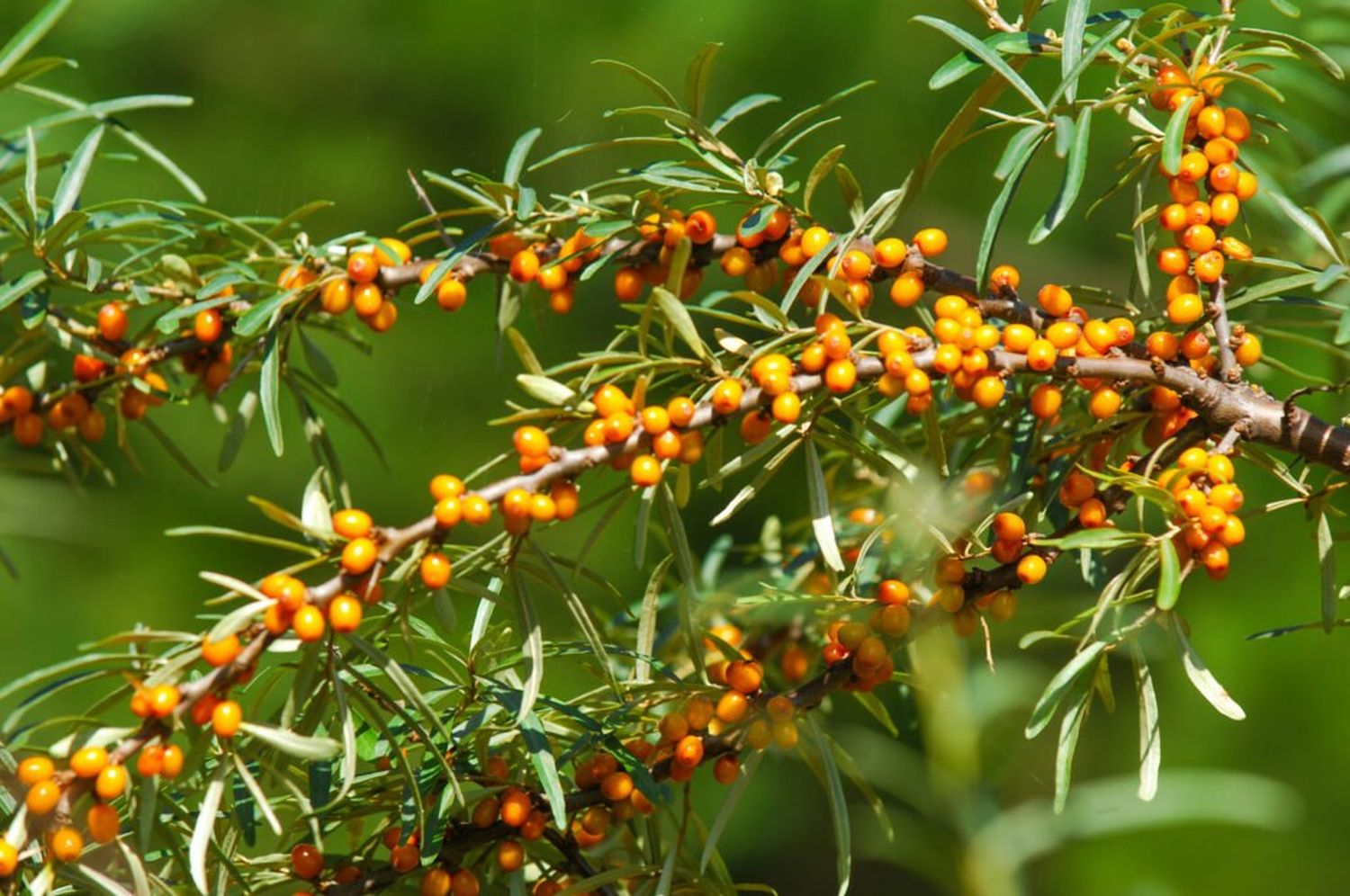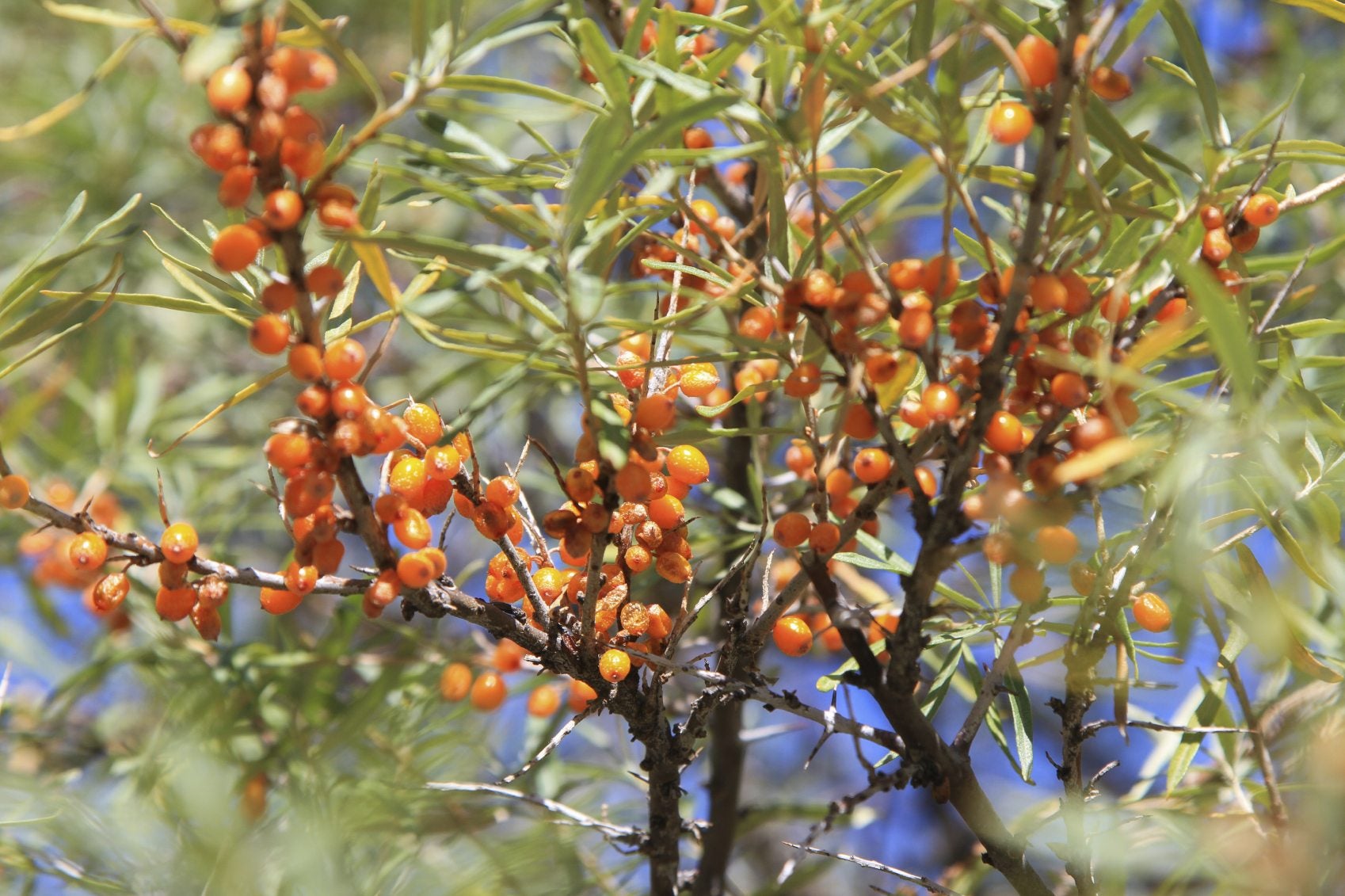Sea buckthorn, a name that might sound unfamiliar to many, is a remarkable plant with a rich history and a plethora of benefits. Its scientific name, Hippophae rhamnoides, is derived from Greek words meaning “shining horse,” reflecting its traditional use to improve the health and appearance of horses. Today, this versatile plant is gaining global recognition for its nutritional value, medicinal properties, and ecological significance.
Sea buckthorn is a hardy, deciduous shrub that thrives in harsh environments, often found along coastlines, riverbanks, and mountainous regions. It is characterized by its spiny branches and silvery-green leaves. The plant is dioecious, meaning that male and female flowers are borne on separate plants. The female plants produce small, orange-yellow berries that are packed with nutrients and bioactive compounds.

Sea buckthorn berries are a veritable treasure trove of nutrients. They are rich in vitamins, minerals, antioxidants, and essential fatty acids. Some of the key nutrients found in sea buckthorn include:
Vitamin C: A potent antioxidant that supports immune function and collagen production.

Traditional medicine systems, such as Ayurveda and Traditional Chinese Medicine, have long recognized the therapeutic benefits of sea buckthorn. Modern research has also confirmed many of these claims. Some of the potential health benefits of sea buckthorn include:
Sea buckthorn’s high vitamin C content helps boost immunity and protect against infections.

Sea buckthorn oil is rich in essential fatty acids and antioxidants that promote skin health.
Sea buckthorn berries can help alleviate digestive issues like constipation and diarrhea.

The antioxidants and omega-3 fatty acids in sea buckthorn can help lower cholesterol levels and reduce the risk of heart disease.

Sea buckthorn berries have a tart and tangy flavor that can be used to create a variety of culinary delights. They can be consumed fresh, juiced, or made into jams, jellies, and sauces. Sea buckthorn oil can be added to salads, smoothies, and other dishes to boost their nutritional value.
Sea buckthorn plays a vital role in ecological restoration and conservation. It is a hardy plant that can grow in harsh conditions and help prevent soil erosion. It also provides habitat and food for various wildlife species.
Sea buckthorn can be cultivated in various climates, but it thrives in regions with cold winters and warm summers. It is a relatively low-maintenance plant that requires well-drained soil and plenty of sunlight.
Harvesting sea buckthorn berries can be challenging due to their spiny branches. Mechanical harvesters are often used to efficiently collect the berries.
Sea buckthorn is a versatile plant with a wide range of applications. As awareness of its health benefits grows, it is likely to become even more popular in the future. However, sustainable cultivation and harvesting practices are essential to ensure the long-term availability of this valuable resource.
In conclusion, sea buckthorn is a true gift of nature. Its nutritional richness, medicinal properties, and ecological significance make it a valuable asset. By incorporating sea buckthorn into our diets and lifestyles, we can reap the rewards of this golden elixir.
Sea Buckthorn Plant
